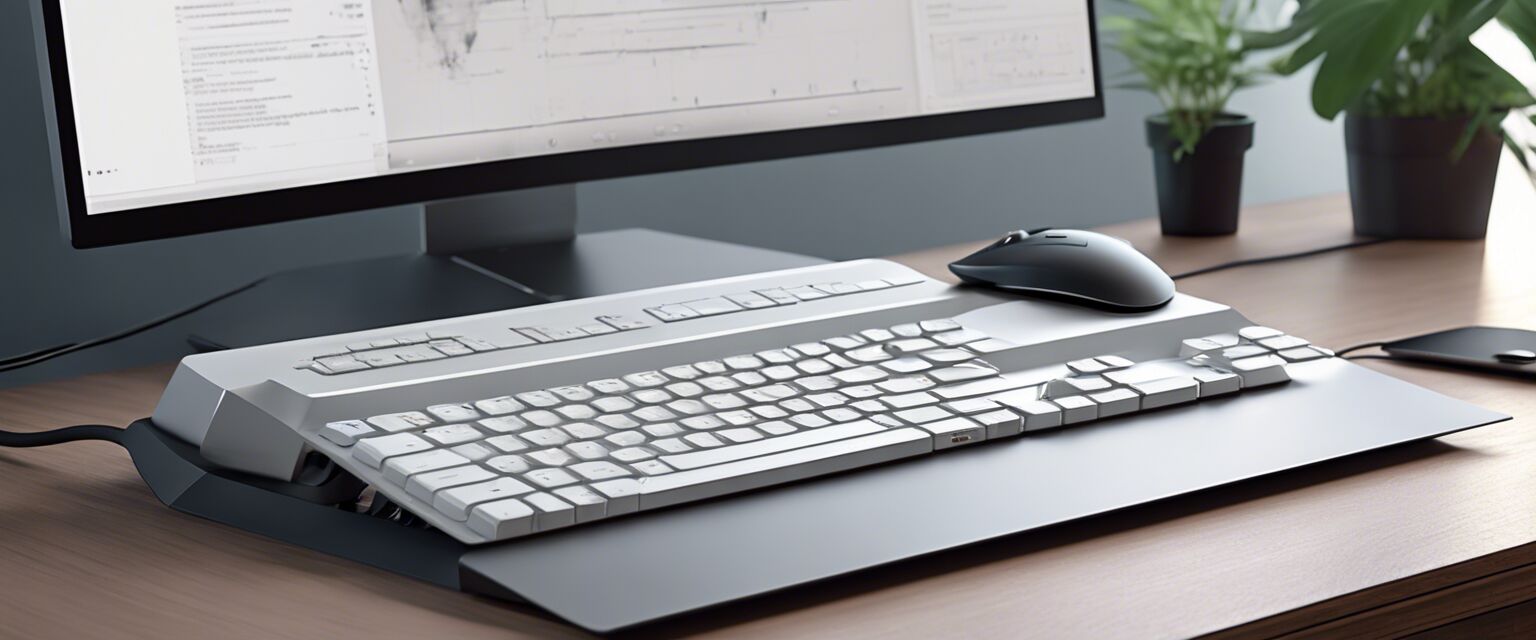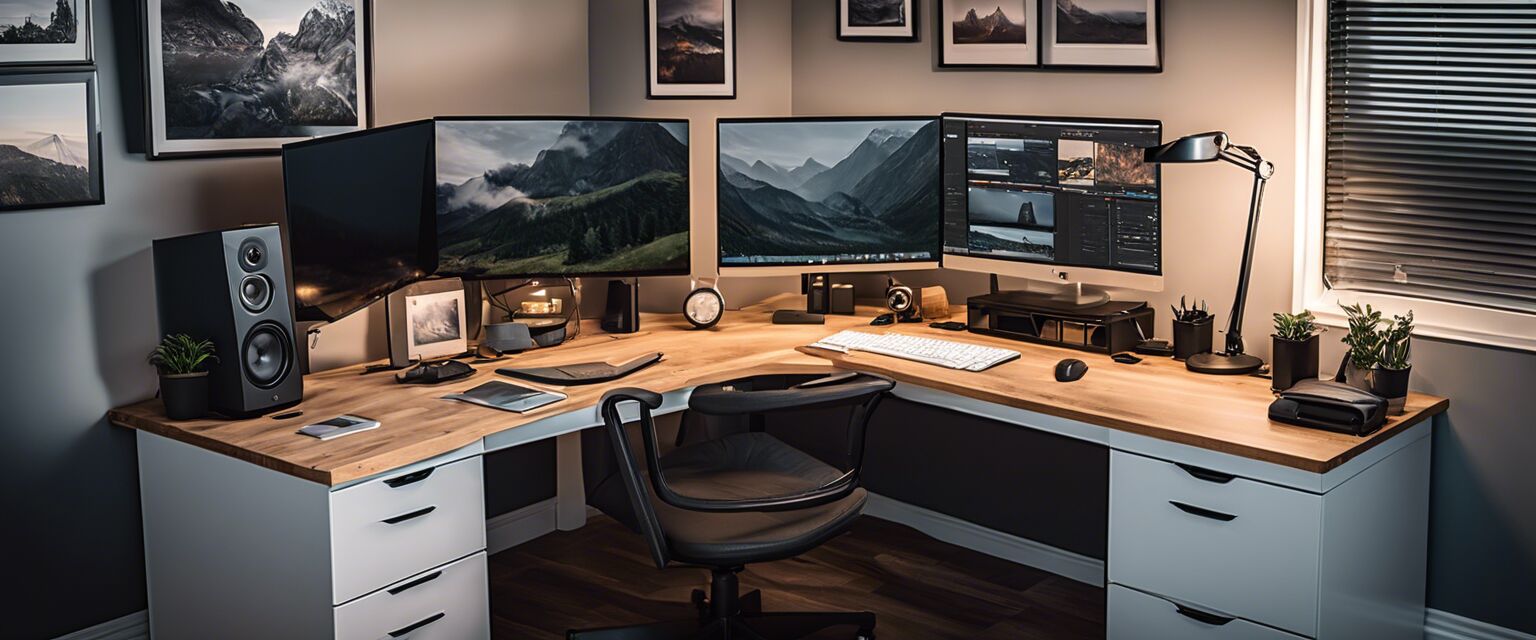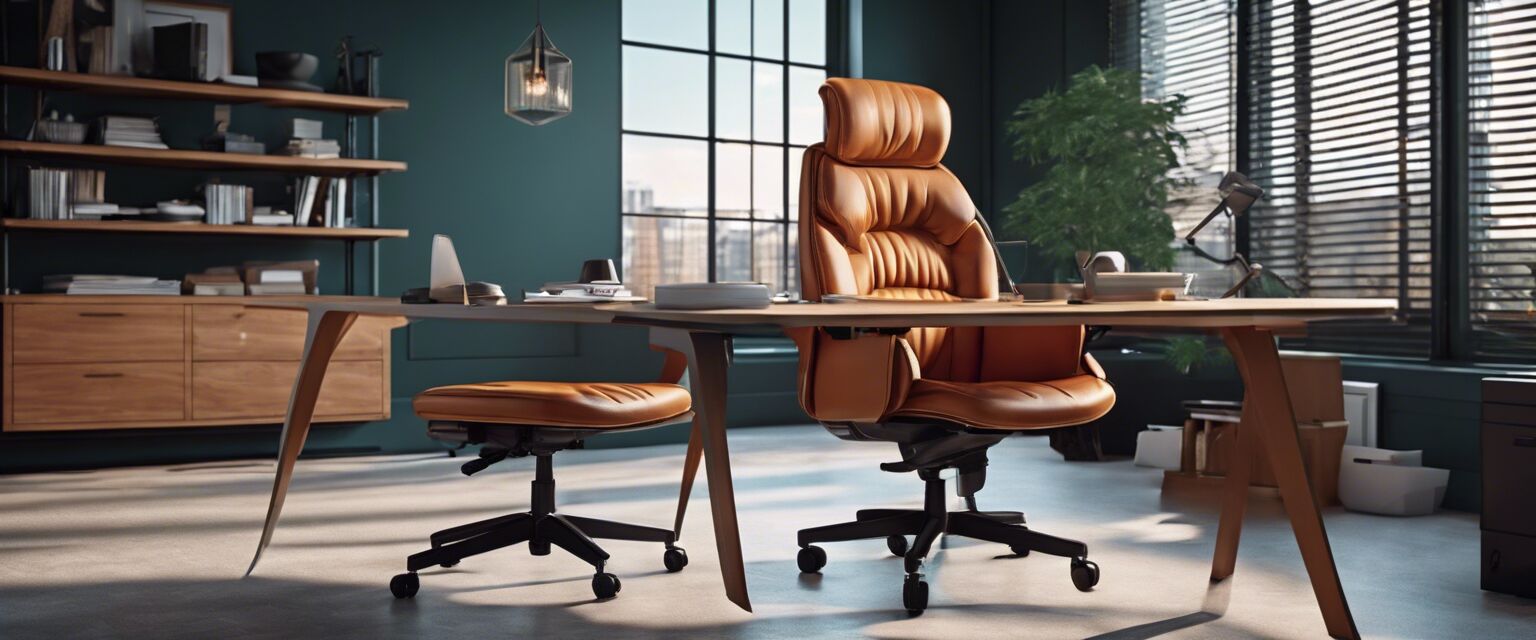
Multi-Monitor Setups
Key Takeaways
- Multi-monitor setups enhance productivity.
- Optimal configurations depend on user needs and workspace.
- Proper ergonomic arrangements can prevent strain.
- Choosing the right accessories is crucial for a seamless experience.
Multi-monitor setups have become increasingly popular in home offices as they provide a significant boost in productivity and efficiency. By allowing users to view multiple applications simultaneously, these configurations can streamline workflows and enhance multitasking capabilities. In this article, we will explore the ideal configurations for multi-monitor setups, accessories that can enhance your experience, and tips for optimizing your workspace.
Benefits of Multi-Monitor Setups
Investing in a multi-monitor setup can lead to numerous benefits, including:
- Improved productivity by reducing the time spent switching between applications.
- Enhanced multitasking capabilities, allowing for real-time data analysis and monitoring.
- Increased screen real estate for creative professionals.
Ideal Configurations for Multi-Monitor Setups
Choosing the right configuration for your multi-monitor setup depends on your work style and available space. Here are some popular configurations:
| Configuration | Description | Ideal For |
|---|---|---|
| Dual Monitors | Two monitors placed side by side to expand workspace. | General productivity tasks. |
| Triple Monitors | Three monitors arranged in a curved or straight line. | Data analysis and content creation. |
| Vertical Monitor | One monitor positioned vertically among horizontal monitors. | Programming and reading long documents. |
| Mixed Setup | A combination of different monitor sizes and orientations. | Creative professionals needing versatility. |
Choosing the Right Monitors
When selecting monitors for your setup, consider the following factors:
- Resolution: Higher resolutions provide better clarity.
- Size: Ensure monitors fit your space and align with your needs.
- Panel Type: IPS panels offer better color and viewing angles.
- Refresh Rate: Higher refresh rates are beneficial for gaming or video editing.
Essential Accessories for Multi-Monitor Setups
To maximize your multi-monitor experience, consider the following accessories:
Beginner's Tips for Multi-Monitor Setups
- Start with dual monitors and expand as needed.
- Use monitor stands to save desk space.
- Invest in a quality docking station for easy connections.
- Consider cable management solutions to keep your workspace tidy.
Ergonomics in Multi-Monitor Setups
Proper ergonomics are essential to avoid strain during long working hours. Here are some tips:
| Ergonomic Tip | Description |
|---|---|
| Monitor Height | Top of the monitor should be at or slightly below eye level. |
| Distance | Keep monitors at arm's length to reduce eye strain. |
| Chair Adjustment | Use an adjustable chair to maintain proper posture. |
Comparing Multi-Monitor Setup Options
The choice of a multi-monitor setup often comes down to personal preference and workspace constraints. Below is a comparison of different monitor types:
| Monitor Type | Pros | Cons |
|---|---|---|
| LCD | Energy efficient, affordable | Limited viewing angles |
| LED | Vibrant colors, slim design | Can be more expensive |
| OLED | Exceptional colors and contrast | Higher price point |
Conclusion
Setting up a multi-monitor workspace can significantly enhance productivity and efficiency in your home office. By carefully considering your monitor choices, configurations, and ergonomic practices, you can create a workspace that not only meets your needs but also boosts your workflow.
Pros
- Increased productivity and efficiency.
- Enhanced multitasking capabilities.
- Greater flexibility for different tasks.
Cons
- Higher initial setup cost.
- Requires more desk space.
- Potential for increased eye strain without proper ergonomics.
Further Reading
For more detailed insights on optimizing your home office, check out our other articles on:
Image Gallery











